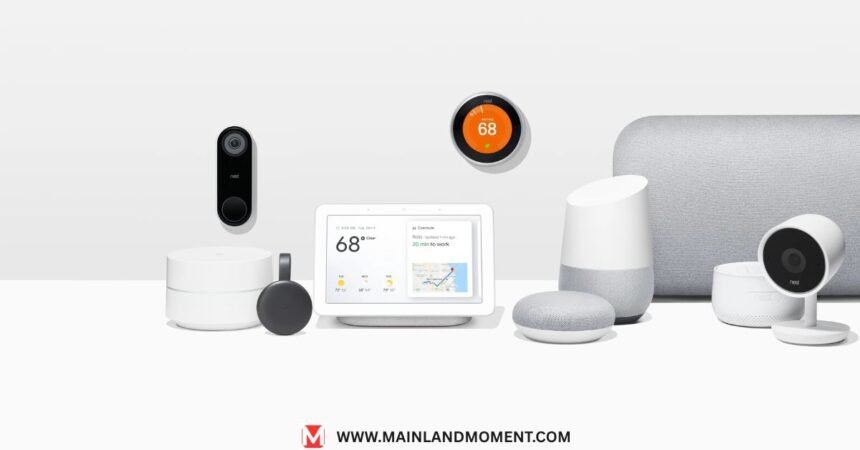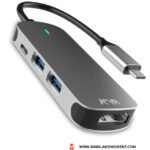Transform Your Life with the Best Smart Home Devices in 2025

Smart home devices turn your living space into a hub of convenience and innovation in 2025. With cutting-edge smart home technology, these connected home gadgets anticipate your needs, from lights that dim on command to thermostats that learn your routine. Picture saying, “Good night,” and watching your home automation systems lock doors, lower blinds, and save energy.
Whether you’re new to IoT home devices or enhancing your smart home ecosystem, voice-controlled gadgets and AI home assistants make life safer and greener. This guide explores the top smart home devices, fresh trends, and practical tips to build a future-ready home tailored to you. Ready to dive in?
Best Smart Speakers for Voice-Controlled Living

Voice-controlled gadgets like smart speakers are the heartbeat of smart home integration. They let you command lights, locks, and appliances with a simple “Hey, Alexa!” In 2025, these devices blend stellar audio with powerful AI home assistants. Here’s the lineup:
- Amazon Echo (5th Gen): Priced at $149, it boasts a 3-inch woofer for rich sound and doubles as a Zigbee hub for seamless smart home device control. It’s Alexa-powered and supports Matter for cross-platform compatibility.
- Google Nest Audio: At $99, it delivers crisp audio and integrates deeply with smart devices compatible with Google Home. Its AI shines at understanding context, like setting reminders based on your schedule.
- Apple HomePod 2: For $299, this speaker offers spatial audio and prioritizes privacy, making it a top pick for Apple fans in the HomeKit ecosystem.
Why start with a speaker? They anchor your home automation systems, letting you manage wireless home devices effortlessly. For example, pair an Echo with smart bulbs to create a “movie night” scene with one voice command. A 2024 CNET report found that 68% of smart home users kick off with a speaker for its versatility.

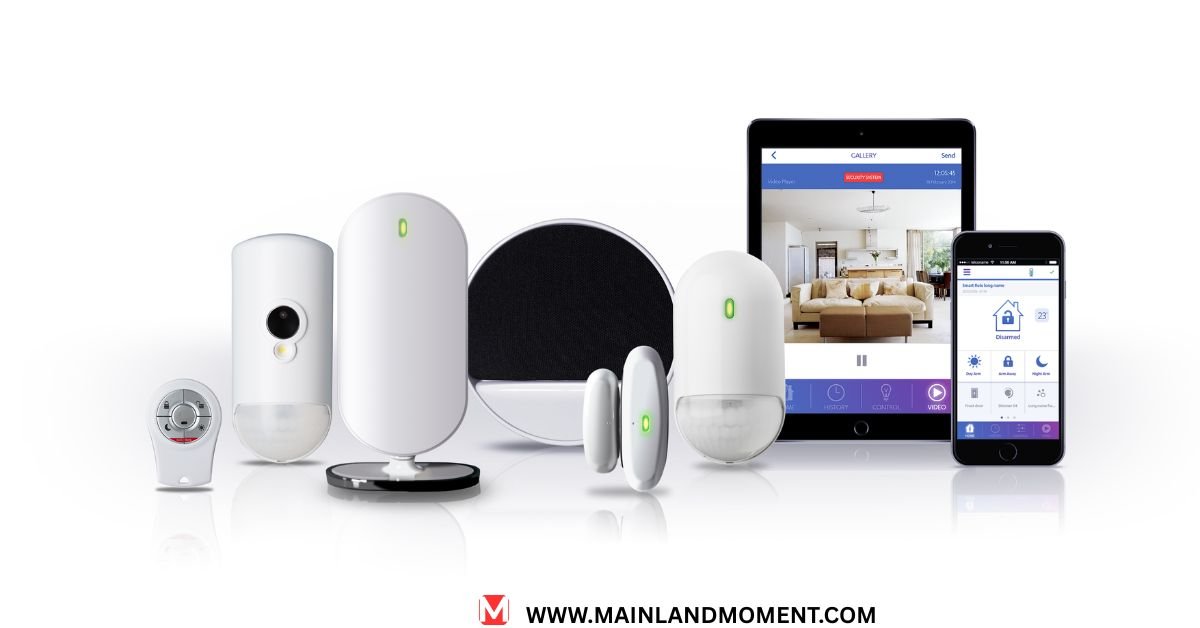
Smart Thermostats That Learn Your Lifestyle
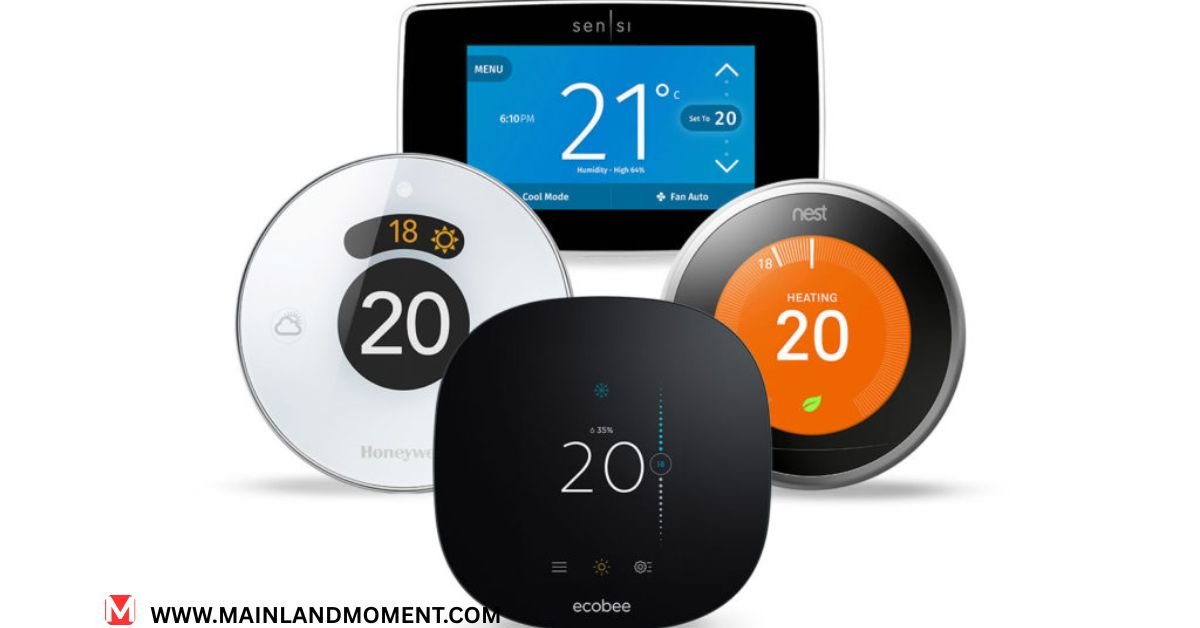
Smart thermostat systems go beyond basic temperature control. They learn your habits and optimize energy use. In 2025, these devices are smarter than ever, saving you money while keeping you cozy.
- Ecobee Smart Thermostat Premium ($249): This gem uses AI to learn your routine and adjusts based on occupancy. It includes air quality sensors and integrates with Alexa.
- Google Nest Learning Thermostat (4th Gen) ($279): It adapts to your schedule in days, saving up to 23% on energy bills, per a 2024 Energy Star study. It’s sleek and Google Home-friendly.
- Amazon Smart Thermostat ($79): A budget-friendly option for Alexa users, it offers simple app control and energy-saving schedules.
Imagine cutting your heating bill because your thermostat knows you’re at work. These devices sync with app-controlled home devices for remote adjustments. For example, Ecobee’s sensors detect empty rooms, reducing wasteful heating. Pair with a smart speaker for voice control, like, “Set the living room to 72 degrees.”
Smart Security Systems That Keep You Safe in 2025
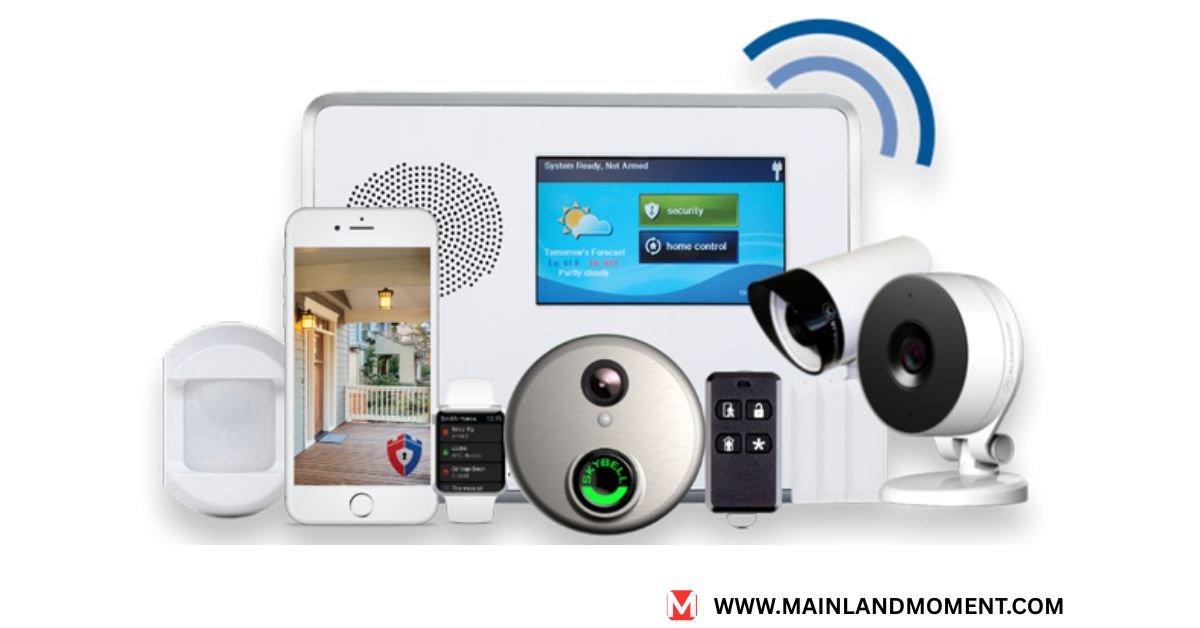
Home security automation is a game-changer, blending AI with real-time alerts to protect your home. In 2025, smart home devices for security are more intuitive than ever.
- Ring Home Security ($199-$499): Offers cameras, sensors, and doorbells with AI that distinguishes people from pets, cutting false alarms by 30%, per Ring’s 2024 data.
- Vivint Smart Home ($599+): A premium system with professional monitoring and integration with smart door locks for keyless entry.
- Wyze Cam v3 ($35): A budget camera with 1080p video and weatherproof design, perfect for home monitoring systems.
You are on vacation, and your Ring camera alerts you to a delivery. You unlock the door remotely for the courier, then relock it all from your phone. These systems pair with smart lighting solutions to deter intruders, like triggering porch lights on motion detection. A 2025 PCMag survey notes 74% of users feel safer with smart security.
Cutting-Edge Smart Lighting Systems to Brighten Your Mood
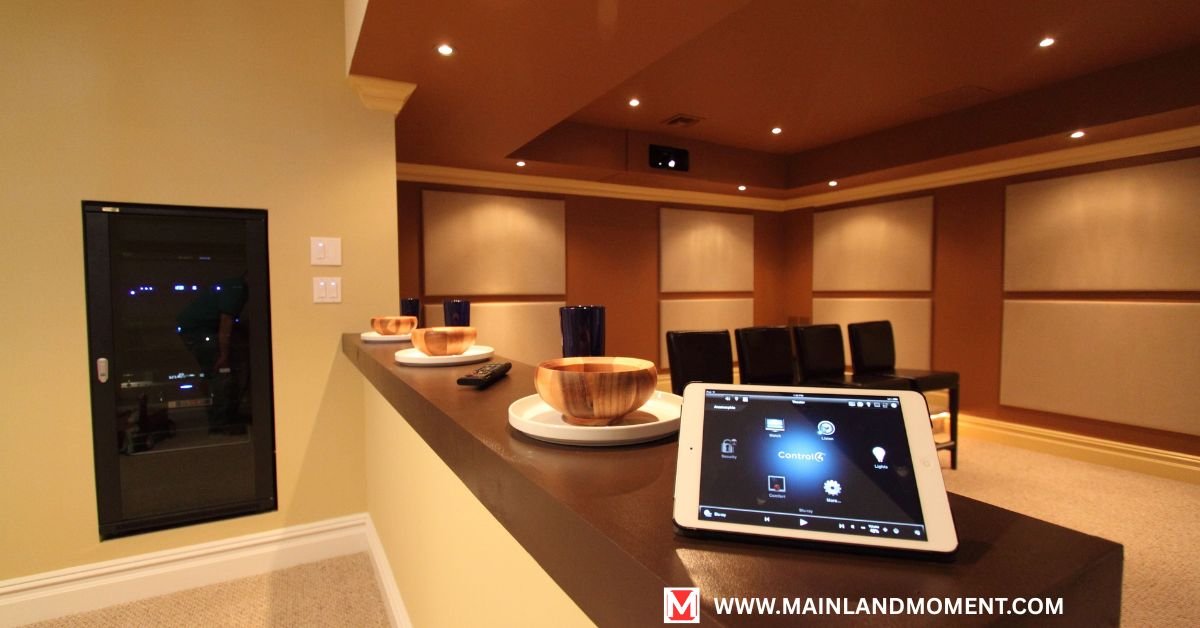
Smart lighting solutions transform your home’s vibe. They’re not just bulbs—they’re mood setters, energy savers, and automation stars.
- Philips Hue White & Color Ambiance ($49-$199): These bulbs offer 16 million colors, sync with circadian rhythms, and use 80% less energy than traditional bulbs.
- Wyze Bulb Color ($14): A budget-friendly option with app control and Alexa/Google Home compatibility.
- LIFX Color A19 ($39): Bright and vibrant, it supports Matter for seamless smart home integration.
Think of smart lights as your home’s mood ring, shifting hues to match your vibe. Set a “sunset” scene for warm tones or a “focus” mode for cool whites. A 2024 Consumer Reports study found LED smart bulbs last up to 25,000 hours, saving $100 over their lifespan. Pair with voice-controlled gadgets for hands-free control.
AI-Powered Smart Plugs & Switches for Total Control
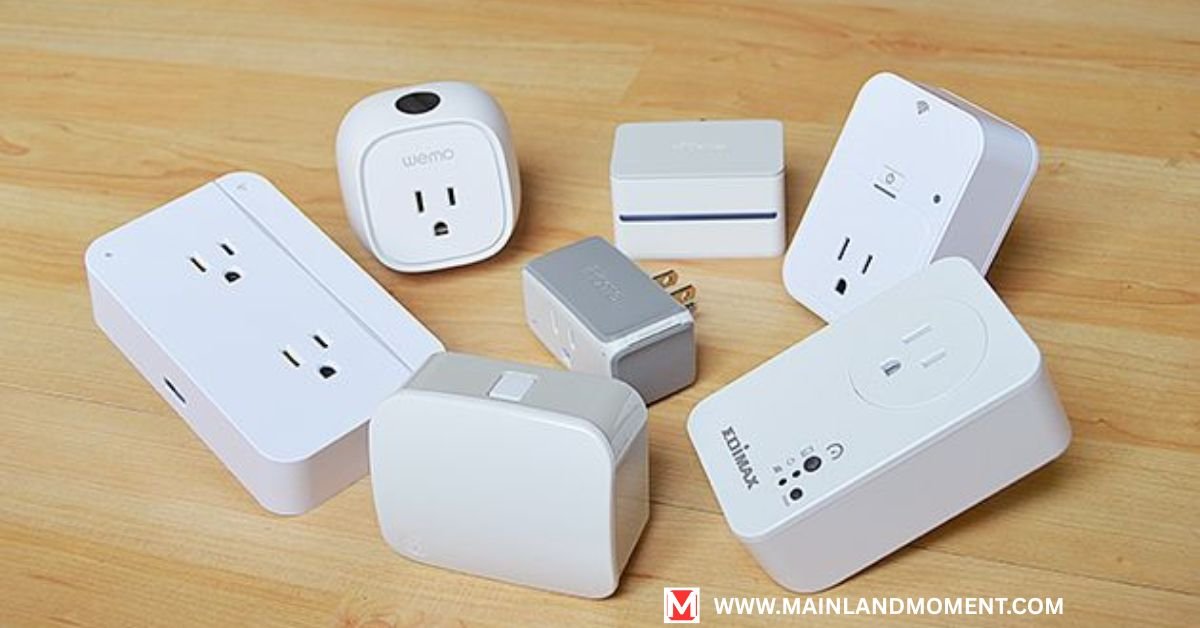
Smart plugs and switches turn any device into a remote control appliance. They’re affordable, versatile, and packed with home AI automation.
- TP-Link Kasa Smart Plug Slim ($19): Monitors energy use and schedules devices, like turning off your TV at night.
- Wemo Mini Smart Plug ($24): Compact and compatible with Alexa, Google, and Apple HomeKit.
- Lutron Caseta Smart Switch ($59): Ideal for retrofitting older homes, controlling entire circuits.
Plug your coffee maker into a Kasa plug, and it brews as you wake up. AI-powered plugs learn usage patterns, cutting phantom energy by up to 10%, per a 2024 TP-Link report. They’re perfect for smart home devices for beginners, offering an easy entry into automation.
Best Smart Home Hubs for Seamless Integration
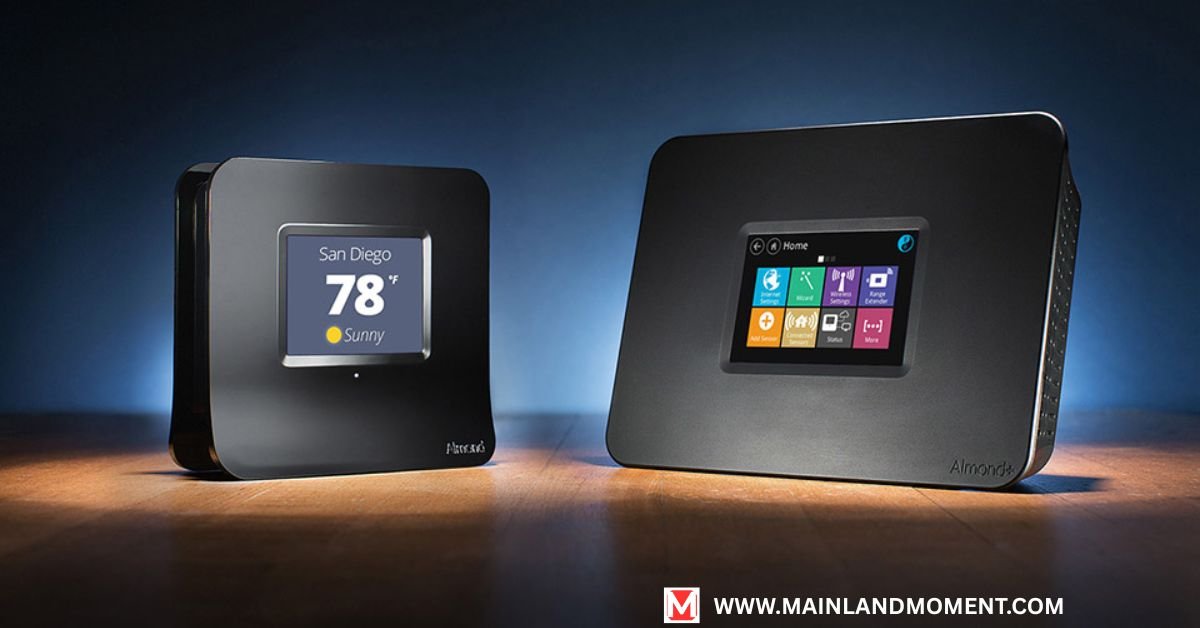
A smart home hub is like a conductor, ensuring all your wireless home devices work in harmony. In 2025, hubs prioritize smart home integration with Matter and Thread protocols.
- Amazon Echo Show 8 ($149): A 13MP camera and vibrant display make it a video-calling and control powerhouse for Alexa users.
- Google Nest Hub Max ($229): Its 10-inch screen and Face Match tech personalize routines, ideal for smart devices compatible with Google Home.
- Samsung SmartThings Hub ($99): Supports 5G for lag-free control, perfect for complex smart home ecosystems.
Hubs streamline home automation systems, letting you control devices from one app. For example, set a “goodnight” routine to lock doors, dim lights, and lower the thermostat. Place your hub centrally for strong Wi-Fi, as weak signals can disrupt IoT home devices.
2025’s Best Smart Doorbells & Entry Systems

Smart doorbells and smart door locks are your home’s first line of defense, blending security with convenience.
- Ring Video Doorbell Pro 2 ($249): Features 3D motion detection and 1536p video, with AI for package detection.
- August Wi-Fi Smart Lock ($229): Retrofits existing deadbolts for keyless entry via app-controlled home devices.
- Wyze Video Doorbell ($59): A budget pick with 1080p video and local storage options.
Never miss a delivery your doorbell pings your phone when a package arrives. AI enhancements, like facial recognition, let you know who’s at the door. A 2025 TechRadar review praises Ring’s 90% accuracy in identifying visitors. Pair with home monitoring systems for a fortress-like setup.
Smart Kitchen Appliances That Make Life Easier
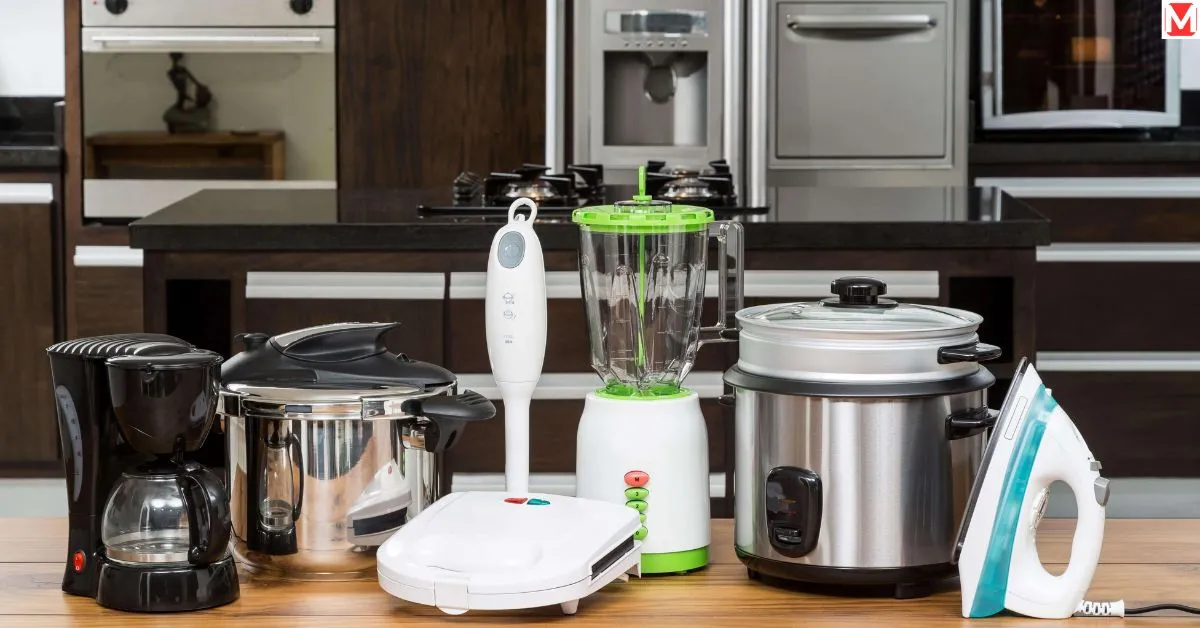
Smart kitchen appliances turn cooking into a breeze, blending home AI automation with convenience.
- LG SIGNATURE Smart Microwave ($699): Suggests recipes based on ingredients and syncs with app-controlled home devices.
- Samsung Bespoke Refrigerator ($2,999): Tracks inventory and suggests meals, reducing food waste by 15%, per Samsung’s 2024 data.
- Anova Precision Oven ($599): App-controlled for perfect roasts, ideal for busy home chefs.
Your fridge can text you a grocery list or suggest a pasta dish based on what’s inside. Budget-conscious? Use a smart plug to automate your existing coffee maker. A 2024 Grand View Research report predicts the smart kitchen market will hit $40 billion by 2030, driven by smart home technology.
Next-Level Smart TVs & Entertainment Devices
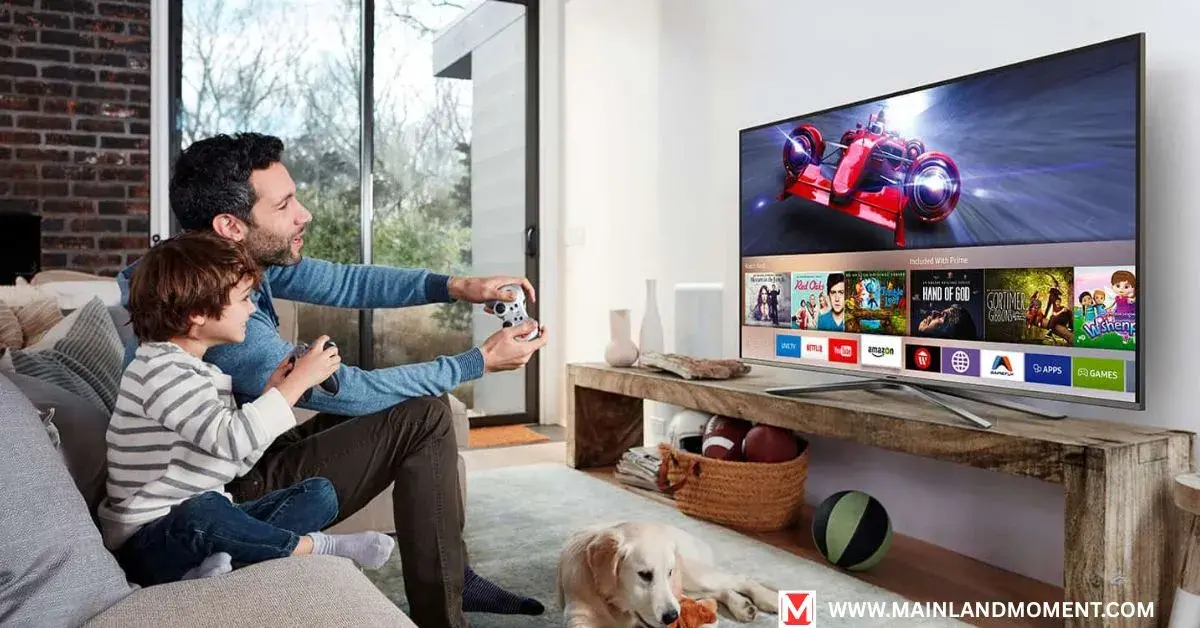
Smart entertainment systems make your living room a private theater, with AI-enhanced visuals and immersive audio.
- Samsung QLED 8K TV ($3,499): AI upscaling delivers crystal-clear visuals, with voice control via AI home assistants.
- Sonos Era 300 ($449): Spatial audio fills the room, syncing with smart home ecosystems for multi-room sound.
- Amazon Fire TV Stick 4K ($49): A budget streaming device with Alexa integration.
Smart TVs adjust brightness based on ambient light, saving energy. A 2025 PCMag survey found 82% of users prefer voice-controlled gadgets for entertainment. Pair with smart lighting solutions for a cinematic vibe.
Must-Have Smart Sensors for a Fully Automated Home
Smart sensors are the unsung heroes of home automation systems, triggering actions for efficiency and safety.
- Ecobee Smart Sensor ($99): Detects occupancy and temperature, adjusting HVAC for 10% energy savings.
- YoLink Water Leak Sensor ($29): Alerts you to leaks, preventing $5,000+ in damage, per 2024 insurance data.
- AirThings Wave Plus ($229): Monitors air quality, syncing with smart thermostat systems to improve health.
If you leave a room, occupancy sensors turn off lights, saving $50 yearly, per Energy Star. Sensors integrate with hubs for context-aware routines, like opening vents when CO2 levels rise. They’re a must for smart homes and energy efficiency.
What’s New in Smart Home Devices This Year?
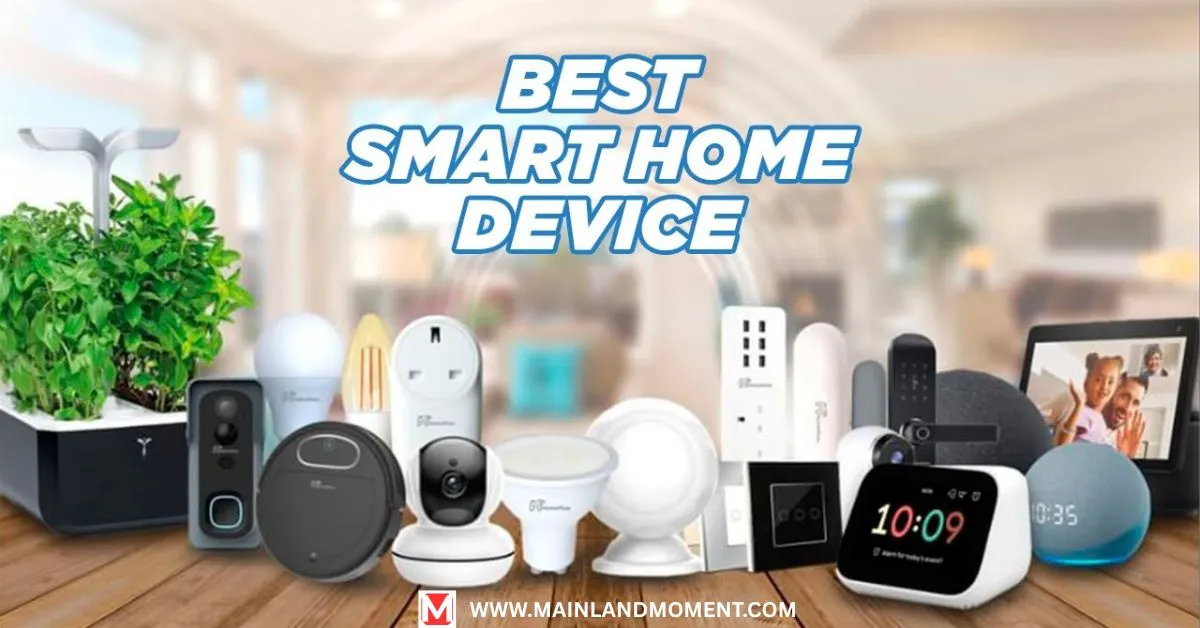
2025 is a blockbuster year for new smart home innovations 2025. Here’s what’s shaking up the smart home technology scene:
- Matter 1.4 Standard: Unifies smart devices compatible with Alexa/Google Home/Apple, reducing app clutter. Over 500 devices support it, per a 2024 CSA report.
- AI Advancements: AI home assistants now predict routines, like preheating your oven based on your cooking habits.
- 5G Integration: Samsung’s SmartThings Hub uses 5G for lag-free smart entertainment systems and AR setups.
- Sustainability Push: Energy-saving smart devices like solar-integrated plugs cut carbon footprints by 12%, per a 2025 EPA study.
- Health Tech: Smart mattresses and air purifiers track sleep and air quality, boosting wellness.
These trends make 2025 the perfect time to upgrade your smart home ecosystem. But with so many options, how do you pick the right devices?
How to Choose the Right Smart Home Devices in 2025
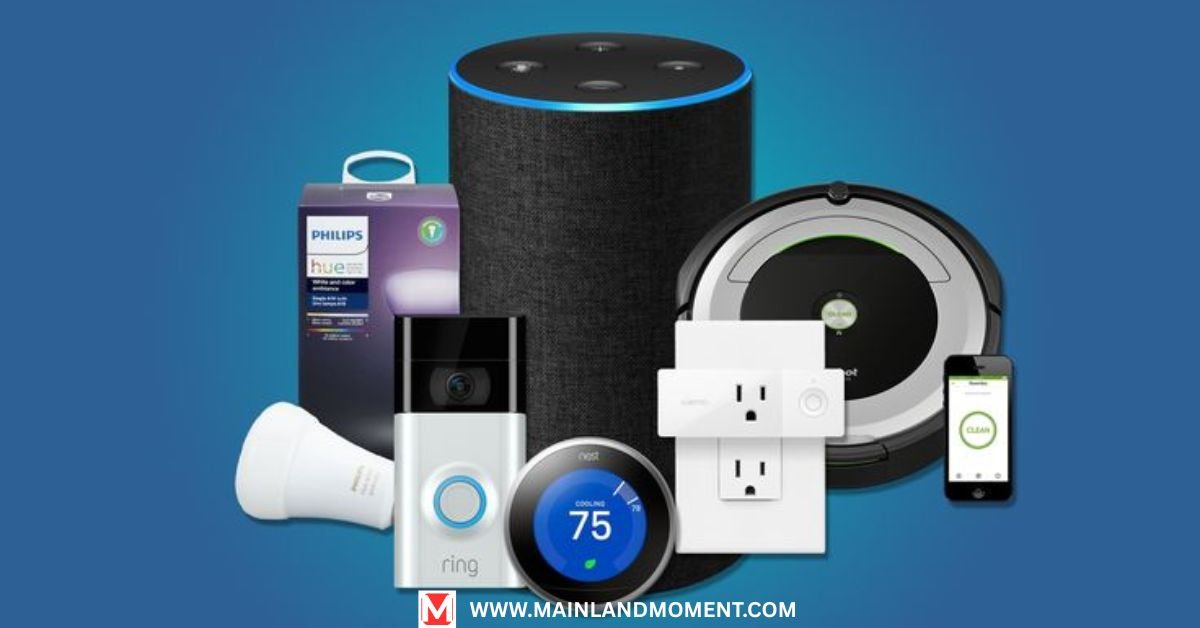
Setting up a smart home can feel like navigating a tech maze. Here’s a clear path to choose top-rated smart home products:
- Pinpoint Your Needs: Want security? Start with smart doorbells. Crave convenience? Grab a voice-controlled gadget.
- Check Compatibility: Ensure devices match your ecosystem (e.g., HomeKit for Apple users).
- Plan for Growth: Choose Matter-certified IoT home devices for future-proofing.
- Ease of Use: Pick plug-and-play options like Wyze Bulbs for smart home devices for beginners.
- Budget Wisely: Balance cost and features—avoid gimmicks like overly complex hubs.
Pro Tip: Test one device, like a smart plug, before diving into a full smart home ecosystem. A 2025 Consumer Reports guide suggests checking Wi-Fi strength to avoid connectivity hiccups. Curious about how smart homes work? It’s all about devices communicating via Wi-Fi, Bluetooth, or Thread to automate tasks.
Best Ecosystems for Smart Home Devices: Alexa, Google, or Apple?
Your smart home ecosystem is the glue for your connected home gadgets. Let’s compare the big three:
- Amazon Alexa:
- Strengths: Supports 100,000+ smart home devices, affordable hubs like Echo Dot ($49), and a vast skills library.
- Weakness: Privacy concerns due to data collection.
- Best for: Budget users seeking flexibility.
- Google Home:
- Strengths: Intuitive AI home assistants, strong Nest integration, and predictive automation.
- Weakness: Fewer third-party IoT home devices than Alexa.
- Best for: Android users and AI fans.
- Apple HomeKit:
- Strengths: Top-tier privacy, seamless iOS integration, and premium home automation systems.
- Weakness: Higher cost, limited device range.
- Best for: Apple loyalists prioritizing security.

A 2025 TechRadar poll found 45% of users prefer Alexa for its affordability, but how to secure your smart home matters. Use strong passwords and two-factor authentication to protect your home monitoring systems.
Budget vs. Premium: Best Smart Home Devices for Every Price Range
Affordable smart home gadgets prove you don’t need deep pockets for home automation systems. Here’s a breakdown:
- Budget ($10-$50):
- Wyze Bulb Color ($14): Color-changing, Alexa-compatible.
- Amazon Smart Plug ($25): Automates any appliance.
- Wyze Cam v3 ($35): 1080p security for home security automation.
- Mid-Range ($50-$150):
- Amazon Echo Dot (5th Gen) ($49): Compact hub with solid sound.
- TP-Link Kasa Smart Plug Slim ($80 for four): Energy monitoring.
- Ring Video Doorbell ($99): 1080p video for smart doorbells.
- Premium ($150+):
- Ecobee Smart Thermostat Premium ($249): Air quality sensor, Alexa built-in.
- Philips Hue Starter Kit ($199): Premium smart lighting solutions.
- Sonos Era 300 ($449): Spatial audio for smart entertainment systems.
For $100, a Wyze Cam and Amazon Smart Plug can kickstart your smart home devices for beginners. Premium devices offer longevity and advanced AI, but budget options shine for scalability. A 2024 Markets and Markets report predicts the smart home market will reach $192 billion by 2030, driven by affordable smart home gadgets.
Energy-Efficient Smart Home Devices to Lower Your Bills
Smart homes and energy efficiency go hand in hand. Energy-saving smart devices cut bills and help the planet.
- Smart Thermostats: Ecobee and Nest save 10-23% on HVAC costs, per Energy Star.
- Smart Plugs: TP-Link Kasa reduces phantom energy by 10%, saving $30 yearly.
- Smart Bulbs: Philips Hue LEDs use 80% less power, lasting 25,000 hours.
- Smart Sensors: YoLink leak detectors prevent costly water damage.
If every home used smart thermostats by 2026, heating/cooling energy use could drop 9%, per a 2025 EPA estimate. Pair with solar panels or energy-saving smart devices like Tesla Powerwall for max savings. For example, a Kasa plug can schedule your AC to run only when you’re home.
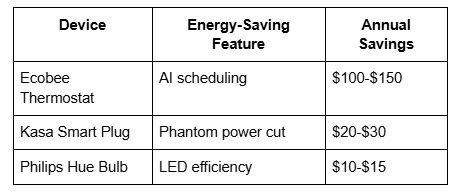
Case Study: Sarah, a Seattle homeowner, installed an Ecobee thermostat and Philips Hue bulbs. Her energy bill dropped 18% in six months, saving $120 annually. She used the Ecobee app to tweak schedules remotely, proving how to automate your home can be simple and impactful.
Conclusion
In 2025, smart home devices redefine how we live. From voice-controlled gadgets to energy-saving smart devices, these tools offer convenience, security, and savings. Whether you start with a smart plug or build a full smart home ecosystem, the benefits of home automation are clear less hassle, lower bills, and a safer home.
Not sure where to begin? Try a smart bulb or smart speaker to dip your toes into how to automate your home. With new smart home innovations 2025 like Matter and AI, there’s never been a better time to upgrade. Pick one top-rated smart home product from this guide and transform your space today.

